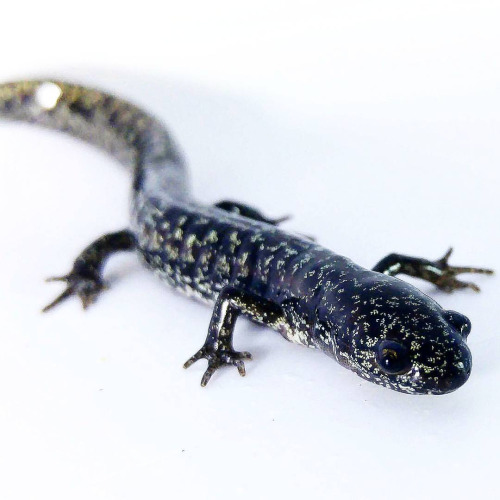The reticulated flatwoods salamander (Ambystoma bishopi) and frosted flatwoods salamander (Ambystoma cingulatum) are black to chocolate-black salamanders with light-gray lines and specks that form a cross-banded pattern across their backs. Both species occupy longleaf pine flatwoods in the lower southeastern coastal plain. The animals spend most of their lives underground, in crayfish burrows, root channels or burrows of their own making; they emerge in the early winter rains to breed in small, isolated seasonal wetlands.
Once prevalent throughout Alabama, Florida and Georgia, the reticulated flatwoods salamander (Ambystoma bishopi) has not been observed in Alabama in approximately 35 years. In 2009 this species was struggling to hang on in 20 small isolated populations, and the frosted flatwoods salamander (Ambystoma cingulatum) was found in only 25 tenuous populations in Florida, Georgia and South Carolina. Since then many of these populations have declined or even disappeared.
The Fish and Wildlife Service listed the flatwoods salamander (Ambystoma cingulatum) as a federally threatened species in 1999. As a result of a taxonomic reclassification of the species, in 2008 the Service recognized the flatwoods salamander as two distinct species. In 2009 the agency finalized its determination of endangered status for the reticulated flatwoods salamander (Ambystoma bishopi), while retaining a threatened status for the frosted flatwoods salamander (Ambystoma cingulatum). In response to a lawsuit by the Center for Biological Diversity, the Service in February 2009 designated 4,453 acres of protected critical habitat for the reticulated flatwoods salamander and 22,970 acres of protected critical habitat for the frosted flatwoods salamander.
Source: Center for Biological Diversity, press release, August 22, 2016
http://www.biologicaldiversity.org/news/press_releases/2016/flatwoods-s…

- Login om te reageren
